Calathea & Prayer Expert Plant Care Guide: How to Grow Thriving Tropical Houseplants
 Imagine a plant that doesn't just sit still but actually has the ability to dance on its own. Welcome to the theatrical world of Calathea and Prayer Plants - nature's living, breathing plant ballerinas that transform your indoor spaces into a vibrant dramatic production.
Imagine a plant that doesn't just sit still but actually has the ability to dance on its own. Welcome to the theatrical world of Calathea and Prayer Plants - nature's living, breathing plant ballerinas that transform your indoor spaces into a vibrant dramatic production.
All found under the family name Marantaceae, these botanical wonders are rockstar divas in the houseplant world, celebrated for their beautiful and varied foliage. Each leaf is a masterpiece - a canvas painted with intricate patterns, textures, and mesmerising colour combinations that leave many folks guessing whether they are real or not.
What makes Calathea and Prayer Plants truly magical is their incredible "dancing" behaviour. As daylight fades, these plants perform a nightly ritual, folding their leaves upright as if in quiet meditation, then gently unfurling them with the morning light. This unique movement, known as nyctinasty, is more than just a visual spectacle; it's a lively response to the plant's daily change in environment.
NYCTINASTY DEFINED:
Nyctinasty (pronounced nikTINuhstee) is a movement of plant parts - most commonly leaves - that occurs in response to changes in light conditions, primarily happening between day and night. The term comes from the Greek words "nyktos" meaning night, and "nastos" meaning pressed down.
Hailing from the lush, humid rainforests of Central and South America, these plants bring a slice of tropical magic into our homes. They thrive in warm, humid environments - think steamy bathrooms or cosy kitchen corners. With sizes ranging from compact desktop companions to statement floor plants, there's a Calathea or Prayer Plant for every space and style.
This comprehensive guide serves as your ultimate guide to mastering the art of Calathea and Prayer Plants care. We'll dive deep into their secret language of leaves, unravel the mysteries of their unique care requirements, and equip you with expert tips to help these botanical ballerinas not just survive but truly thrive in your home. From understanding their humidity needs to decoding their dramatic leaf movements, we'll transform you from a curious plant enthusiast to a confident Calathea and Prayer Plants carer.

Why Are Calathea and Prayer Plants So Colourful?
Mother Nature is the ultimate Instagram artist, and Calathea and Prayer Plants are her most epic plant influencers! These botanical showtoppers don’t just look pretty - they have some serious survival skills that have been perfected over millions of years of plant evolution.
Picture this: A South American rainforest, where sunlight plays hide and seek through layers of leafy canopy. Getting enough light is like winning the lottery for most plants. This is the moment when Calathea and Prayer Plants truly shine, both literally and metaphorically. Their leaves aren't just a fashion statement; they're like high-tech, survival mode plant gear.
Properties of Calathea & Prayer Plants that give them colourful Foliage
-
Light Management Superpower: The intricate designs help these plants capture and distribute limited light availability more efficiently. The darker undersides and variegated patterns act like natural solar panels, maximising photosynthesis in low-light conditions.
-
Camouflage Experts: Those mesmerising patterns aren't just for show. Instead, they assist Calathea and Prayer Plants in seamlessly blending into the forest floor, ensuring their safety from plant-eating critters.
-
They’re Temperature Regulation Wizards: Their unique colours are built-in climate control, helping them manage heat in their unpredictable rainforest home.
Fun fact: The first ever described Calathea species was Calathea lutea. This botanical pioneer boasted paddle-shaped leaves that set the stage for the genus's reputation for spectacular foliage.
A classification tangent: Calathea vs. Goeppertia - What’s the difference?
You may have heard the term Geoppertia being bandied around when it comes to Calathea, and this may have you second guessing whether the classification is correct! (Recall that time when certain Philodendron were renamed with what seems like a swear word: Thaumatophyllum).
Science is just being science…
The Great Reclassification of Calathea
In the ever-evolving world of botanical science, plant classification is like a dynamic puzzle. What we knew as Calathea has undergone a significant taxonomical makeover. Most plants previously classified under the Calathea genus have been reclassified into the Goeppertia genus, thanks to advanced genetic research that has shed new light on the botanical history of these species and their family tree.
The Scientific Nitty Gritty
The reclassification stems from detailed genetic analysis (i.e. DNA testing for us normal people) that revealed more significant differences between these species of plants than previously understood. While they may look similar to the untrained eye, geneticists discovered subtle but crucial genetic distinctions that warranted a new classification.
What does this mean for you and the plant industry?
This botanical name change may not be significant to the average plant lover. While botanical taxonomists have been diving deep into genetic research, revealing fascinating insights about plant relationships, most plant enthusiasts won't notice much difference. Not all former Calathea species have been renamed to Goeppertia, and plant stores aren't rushing to redesign their labels. Calathea may continue to be a synonym for Goeppertia, yet crucially, the scientific name will have been altered.
The key takeaway? Your plant care routine remains exactly the same. These beloved plants haven't changed – only their scientific classification has been refined. The botanical world continues to evolve, reminding us of nature's incredible complexity and our ongoing journey of understanding.

Maranta vs. Calathea - What's the Difference?
They are related, no doubt about it, but Maranta and Calathea (now mostly reclassified as Geoppertia) each have their own distinct personalities. While both belong to the Marantaceae family, they differ in subtle yet distinct ways.
Maranta, aka the Prayer Plant, is the more physically active one – literally. They tend to move their leaves more regularly with the daily light rhythms and fold their foliage up at night, which is less pronounced in Calathea. They’re also more of a trailing option, perfect for cascading off shelves or adding that little extra something to a hanging plant display. However, similar to their cousins, these plants are eye-catchingly striking and thrive in high humidity.
Calatheas, on the other hand, tend to grow upright, which is ideal for tabletop displays. They are also more well known for their bolder contrasting patterns and structural leaves compared to the Prayer Plant - think pinstripes, peacock patterns, and rich deep colouring.

How to Care for Calathea and Prayer Plants
For many folks, Calathea and Prayer Plants can feel like divas – high-maintenance and demanding. But if you learn a little about their needs and preferences, you’ll learn how to prevent that curling, fading, or crisping up that they are known for!
Below we will break down their basic care requirements and why it is important to follow them to keep your prized plants looking pristine.

Optimal Lighting for Calathea and Prayer Plants
Calathea and Prayer Plants flourish in bright, indirect light reminiscent of their natural habitat under a dense canopy. They love a soft, filtered spotlight, just enough to showcase their bold, vibrant patterns without scorching their delicate foliage.
Signs that your Calathea needs more Light
These are the signs that your Calathea or Prayer Plant have insufficient light:
-
Its colours and patterns fade, losing their signature flair: If your Calathea or Prayer Plants’s vibrant patterns and natural glow seem to have dulled, it’s likely a sign of insufficient light. This lack of vibrancy occurs because the plant is not receiving enough light to produce sufficient chlorophyll, which is essential for photosynthesis and gives leaves their colour. Without adequate light, the intricate markings on the leaves may become muted and less defined.
-
Growth slows, and new leaves may appear smaller: Insufficient light reduces the plant’s ability to produce chlorophyll, which is vital for photosynthesis and energy production. With less energy available, the plant prioritises survival over growth, resulting in slower overall development and smaller, less robust foliage as it conserves resources.
-
Leaves curl or droop dramatically: With too little light, leaves may curl or droop dramatically as a survival response. Here's why this happens:
-
Reduced Photosynthesis: With insufficient light, the plant struggles to produce the energy it needs through photosynthesis. This energy deficit forces the Calathea or Prayer Plants to conserve resources, which can result in curled or drooping leaves.
-
Moisture Imbalance: Low light can slow down the plant's water absorption and release rates. Excess water in the soil (due to reduced uptake) can lead to stress, which manifests as curling or drooping leaves.
-
Light Seeking Behaviour: In some cases, curling is an attempt to adjust the leaf's angle to capture more light. Drooping may occur as the plant lacks the energy to maintain its usual leaf firmness.

Signs that your Calathea has too much Light
These are the symptoms that emerge from too bright an environment
-
Leaves develop brown or faded spots, as though sunburnt: Prolonged exposure to direct sunlight is often the cause. These sunburn spots often appear as dry, brown, or bleached patches on the surface of the foliage. Once damaged, sadly, the affected areas won’t recover and may detract from the plant’s beauty. The only way to resolve these issues is to cut them off.
-
The edges of the leaves may crisp up or curl dramatically, giving them a worn, overworked look: Intense sunlight, combined with increased water evaporation from the leaves and soil, can cause dehydration in the leaves, especially at the edges. This results in dry, crispy margins, or severe curling, making the plant appear stressed and neglected despite your care.
-
Vibrant greens and purples turn pale, washing out the plant’s dramatic hues: Direct sunlight can bleach the leaf pigments, leading to a loss of the rich colours and intricate patterns Calathea and Prayer Plants are known for. Instead of their usual bold tones, the foliage may appear washed out or faded, signalling that the light is too strong.
Top Tip: Rotate your Calathea and Prayer Plants regularly to ensure even growth and prevent leaning. For homes with low natural light, consider supplementing with LED grow lights to keep your plant in the limelight year round.
Maintain the ideal lighting conditions, and your Calathea and Prayer Plants will showcase their finest performance every night, gracefully closing their leaves and reopening them for the following day's theatrical production!

Optimal Watering for Calathea and Prayer Plants
Calathea and Prayer Plants require a perfect balance of hydration. These moisture-loving divas thrive when their hydration schedule is perfectly balanced, so steer clear of overzealous showers or desert dry spells. Consistency is key:
-
Keep the soil consistently moist: not too soggy, not too dry - aim to have it like a wrung-out dishcloth – not dripping, not dry.
-
Wait for the top 3-4 cm of soil to feel dry before watering again. Use your finger as a tester or invest in a moisture meter for near accuracy.
-
Water slowly and evenly, ensuring all parts of the soil get their well-deserved soak to avoid dry patches. This step is often best achieved by soaking your plant for 10–15 minutes.

How to spot Overwatering and Underwatering in Calathea?
Overwatering is a common mistake that can turn your star houseplant into a droopy mess.
-
Yellowing leaves: may be your first sign that roots are drowning in excess moisture and struggling to breathe. If left unchecked, this can lead to root rot, which can cause irreparable damage and high levels of stress in your Calathea and Prayer Plants. To fix this, pull back on watering and let the plant dry out a bit more.
-
Leaves curl or develop brown edges: this happens very quickly when underwatered in some varieties and is irreversible. Crisp edges can be trimmed within the dried out perimeter to avoid a fresh “wound” in the flesh of the living leaf.
-
Slow Growth, droopy or lacklustre: the plant doesn’t have the water resource it needs to thrive – increase watering.
Top Tip: The Importance of Good Water Quality for Calathea: These plants are sensitive to chemicals and minerals commonly found in tap water, including chlorine, fluoride, and heavy minerals. These can cause leaf tips to brown, as they build up in the soil over time, in turn, damaging the roots. Using filtered or distilled water helps prevent these issues and keeps your plant’s foliage pristine. For an eco-friendly, free, and completely natural option, collect rainwater - it’s the ultimate drink in their rainforest homes!

Optimal Humidity for Calathea
In the dramatic world of Calathea and Prayer Plants, humidity isn't just a necessity - it's one of the most important factors for keeping your Marantaceae looking perfect. The trick is providing them with the right amount of moisture in the air to avoid wilted, crispy foliage.

Here are some guidelines for humidity management
1. Add a Humidifier: Using a humidifier is the best and easiest way to add a symphony of moist, warm air near your Calathea’s and Prayer Plants to keep them well hydrated and looking fresh. Some more modern options, such as Smart Humidifiers allow you to set the humidity levels to maintain in a specific space.
2. Cluster Plants: Grouping a variety of humidity-loving plants together offers significant benefits, both visually and environmentally. Visually, a collection of diverse foliage creates a stunning display, transforming leaves into a vibrant tapestry of colours and shapes. More importantly, the close proximity fosters a beneficial microclimate. Through transpiration, each plant releases moisture, collectively forming an invisible humid cloud that nurtures the entire group. This silent collaboration sustains and promotes the well-being of your prized botanical beauties.
3. Use a Pebble Tray: These are cheap, easy ways to add that little extra moisture to the air around your plants. It may not be foolproof, but it is definitely better than nothing.
To increase humidity for your Calathea, place its pot on a pebble-filled drip tray or saucer that is 2-4cm larger than the pot's base. Fill the tray halfway with water, ensuring the pot's drainage holes are not submerged. As the water evaporates, it will create a humid microclimate around your plant.
4. Choose naturally humid positions in your home: Bathrooms and Kitchens are no doubt the most humid spaces in any home, the only downfall is that they can be insufficient in light. If you do however have a lovely bright kitchen or bathroom, these are ideal spaces for your Calathea and Prayer Plants.

Optimal Fertilising for Calathea
Calathea and Prayer Plants are light feeders. Contra to popular belief, the soils in their natural rainforest habitat are not rich with nutrients, as these are washed away on a daily basis by the frequent rainfall. The soils in rainforests are poor!
Fertilise your plant monthly during the growing season (spring to early autumn). Use a quality balanced Liquid fertiliser, diluted by half and usually using organic options, will be much gentler on your plants. Over-fertilising can lead to nutrient burn, so less is more. Fertilising helps maintain vibrant colours and encourages growth.
Optimal Temperature Range for your Calathea
Calathea and Prayer Plants prefer temperatures between 18 and 26 °C. They are very sensitive to cold drafts and extreme temperature changes. Keep them away from windows or doors that can cause these temperature fluctuations. Consistency is key to maintaining healthy foliage that hasn’t been damaged by basic environmental factors.

Avoid Windowsills
The seemingly innocent windowsill where many a mom and grandmother have grown their herbs is a treacherous space for your beloved Calathea or Prayer Plant!
Windowsills are spaces with extreme fluctuations in temperatures; they can go from hot to cold rapidly and can stay that way depending on the weather outdoors. Winter brings with it freezing drafts that wreak destruction, sending cold shivers through delicate roots. While Summer transforms the basic windowsill into a glass-enclosed inferno, trapping heat and sucking moisture from soil and leaves alike. This results in either crispy leaf edges or a scorched, crunchy houseplant.
Light can also be an issue, as windows act not only as temperature conductors but also turn into magnifying glasses when light hits them at the right angle, creating a harsh spotlight on your plants' delicate foliage. Such exposure can scorch tender leaves and crisp leaf edges and disrupt the plant's growth. We often associate plenty of light as a good thing - but in this case - too much is detrimental!
Common Symptoms in Calathea and Prayer Plants

-
Crispy Edges: This is a clear sign your humidity levels are low. Handle these signs of deteriorating beauty by removing the crisp edges using a sterile pair of scissors. Relocate your Calathea or Prayer Plant to a more humid position with its preferred light levels, like a bright bathroom or kitchen. If this is not an option, consider using a pebble tray or humidifier to help manage humidity.
-
Curling or Yellow: If you are noticing that your plants are starting to curl or produce yellow leaves then it is time to check in on your watering habits. The cause is often underwatering, as Calathea and Maranta prefer consistently, lightly moist potting soil. Be sure to avoid allowing your plant to dry out completely.
If the soil is moist, but curling and yellowing proceed, check that you are not waterlogging the potting mix either, and that you are being sure to drain out any excess water in your drip tray or cover pot to avoid wet feet.
Tip: The perfect soil moisture level feels similar to a damp dishcloth. Also consider keeping your plants near access to water; this will allow you to manage their needs easier as you note their foliage changes to their moisture needs.
-
Consistently Drooping Foliage: If your plants seem to have stopped dancing and the leaves keep drooping, then your plants may be struggling from either being too cold or the soil being waterlogged, causing overwatering. Check in on the temperatures in the space, if you feel cold, then it is highly likely that your plant is also struggling with the cold. Relocate your Calathea or Prayer Plant away from cold drafts to a more warm and temperature-stable space. Be sure to also check in on the soil moisture. If the potting mix is feeling soggy, then reduce watering for a while and make sure to check for any excess water in your cover pot or drainage tray. Tip out any excess water if it is present.
-
Faded Foliage: This is caused by a lighting issue, either too much or too little. So, check in with your plant's positioning; a little soft morning sunlight touching your plant’s leaves shouldn't be an issue. Though harsh sunlight is a big no-no, so be sure to relocate your plant if the bright light seems to be fading your plant's foliage.

The same applies to a plant that appears faded and washed out in an area without sunlight. Lack of light slows chlorophyll production, causing your plants to become weak and faded. This is where trial and error will come into play; it's ok to move your plant around until you find that ideal spot that meets all your houseplant's needs.

-
Grey Fluffy Mould on Leaves: This is a fungal issue caused by Botrytis, which is common in warm humid conditions with a lack of airflow. Botrytis is a common airborne fungi that can affect 1400 species of plants, so your Calathea or Prayer Plants are right up their alley.
Grey fuzzy spores, wet black patches, and soft stems are signs of Botrytis. If you notice any of the symptoms on your plant, then it is a clear sign that there is not enough air movement around your plants. Fix the situation by removing the most affected foliage and trimming back any overly dense growth. Crack a window or add a soft fan into the space to move the air around and prevent stagnation. Just make sure the cold draughts do not hit your plant's leaves.
If the infection is severe, treat with a fungicide such as Copper Soap.
TOP TIP: Botrytis is the same fluffy mould you find on rotting fruit, to give you a simple indication of what it looks like.
Common Pests that attack Calathea

Spider Mite infestations in Calathea
Calathea and Prayer Plants, because of their thin delicate foliage, can attract pests such as spider mites and mealybugs, especially in humidity environments that are too low or too high. Inspect your plant regularly and clean the leaves with a damp cloth. In case of infestation, use a gentle organic pesticide or neem oil to control the pests. Here are the main reasons why Spider mites are attracted to Calathea and Prayer Plants:
-
Low Humidity: Despite these plants' love for moisture, spider mites are cunning opportunists who hate it moist but love it dry. So, the very conditions that nourish Calathea and Prayer Plants can become an issue when not maintained. Spider mites take advantage of the drop in indoor humidity, rapidly reproducing in the dry air that stresses these tropical plants.
-
Thin, Delicate Leaves: The same fine leaves that make Calathea and Prayer Plants so visually stunning become their vulnerability. These delicate structures are like an all-you-can-eat buffet for spider mites, who can easily pierce and feed on the plant's tender tissues. Their thin leaves offer little resistance, allowing mites to feast and multiply almost undetected.

-
Limited Natural Predators Indoors: Bringing these tropical beauties inside is like creating a safe haven for spider mites. Without the natural ecosystem checks of their rainforest home – no ladybirds, no predatory mites to keep them in check – these pests can transform your beloved Calathea into their personal breeding ground.
So to prevent the spider mite apocalypse, be sure to check in on your Calathea and Prayer Plants regularly, and if you notice any discolouration or webbing on your plants, check out our spider mite identification and treatment guides for helpful tips on how to eliminate them.

Mealy Bug Infestations in Calathea
A common pest for Calathea as well, these are the primary reasons why Mealy Bugs are attracted to Calathea:
-
Optimal Breeding Ground: High humidity and a lack of airflow create the perfect environment for mealybugs to thrive on Calathea and Prayer Plants. The dense, moist, and warm conditions provide an ideal habitat for these persistent fluffy pests to multiply and spread rapidly.
-
Moisture-induced Vulnerability: While Calathea and Prayer Plants naturally love high humidity, excessive moisture can weaken their plant defences. The consistently damp environment creates soft, vulnerable plant tissues that become prime targets for mealybugs to sink their suckers into.
You will also often find that humidity allows your plants to produce an abundance of new soft growth, which can also take a little longer to harden off. This new growth is full of nutrients, which the Mealybugs are after, making new growth a prime target for these cottonball-like monsters. Be sure to check in the crevices of new growth to spot their hoards.

-
Fungal and Bacterial Ecosystem: The high-humidity environment not only attracts mealybugs but also creates a complex micro-ecosystem. Softened plant tissues and constant moisture break down natural barriers, making it easier for mealybugs to penetrate and colonise the plants' surfaces. They will then release a sticky residue called honeydew. In time, this sticky substance attracts fungal spores like sooty mould, which turn the leaves black and ultimately kill your plants.
-
Reduced Air Circulation: Dense, high-humidity environments limit air movement around the plant, creating stagnant pockets that mealybugs find particularly attractive. These still, moist areas provide perfect hiding spots and breeding grounds for the insects.
The best way to ultimately deal with high humidity and the issues it can cause is to provide good airflow, either by cracking a window or helping the air move with a gentle fan that does not blow on your houseplants. For more information on treating Mealybug, have a look at our Mealybug identification and treatment guide here.
Additional Calathea Care Guidelines
Pruning Calathea
Pruning is not strictly necessary for Calathea and Prayer Plants, but it can help maintain their shape and health. Trim any yellow, dead, or damaged leaves to encourage new growth and keep the plant looking its best. Pruning can also assist in helping you spot and prevent pests, as well as stop disease from spreading.
Repotting Calathea
Marantaceae prefer tight quarters and only need the occasional up-potting every 1 to 2 years in Spring as they start their new growth cycle.
It’s best to only repot your plants once their roots really have become rootbound (circling the inside of their pot) or are sticking out of the drainage holes. When up potting, also be mindful of planter size; too much space can cause waterlogging from excess soil and eventual root rot.
Choose a pot that is no bigger than 3 cm to 5 cm larger in diameter than the current one. Using a well-draining soil mix is essential; consider blending palm peat, perlite, and a small amount of fine bark for aeration. Up-potting helps refresh the soil and encourages a healthy, strong root system.

How to Style your Calathea and Prayer Plants
When it comes to styling, mimicking your plants' natural environment of warmth, humidity and perfect light will create the ideal setting for these botanical superstars. As we know, bathrooms and kitchens are the preferred spaces, provided they have sufficient lighting. But don't limit them! Every corner of your home or office can become their personal spotlight.
Their lush, beautiful foliage can transform any space into a colourful wonderland. Below we will give you some fabulous tips on how to allow these botanical wonders to transform ordinary corners into lush, eye-catching displays.

Striking Hanging Display
Calathea and Prayer Plants show their best side when viewed from above, where their beautiful foliage really does steal the show. However, this doesn’t mean you can’t use them as accents in hanging displays. Their vividly coloured undersides can add an extra dimension to a hanging houseplant collection.
Instead of hanging your Calathea and Prayer Plants high up and out of the way, as you might with trailing plants, for that curtain effect, consider using a Cotton Cord Basket or Macramé positioned at or just below eye level. This setup allows the stunning patterns to be admired while ensuring the plant receives adequate airflow and indirect light.
Another great way to make your Calathea and Prayer Plants really stand out in a hanging display is to use an interesting and decorative pot holder, such as our contemporary Andro Pot Ring, designed for both practicality and style. This accessory adds a touch of simplistic elegance to your display while saving space.
For a unique twist, Moss Balls are an exceptional choice. They provide the perfect environment for moisture-loving plants while transforming them into striking visual centrepieces that really will command attention.

Elevating with Plant Stands
An excellent way to add dimension and movement to your plant displays is by using plant stands to elevate your Calathea and Prayer Plants. The varied heights can transform an ordinary arrangement into a well-thought-out and visually appealing focal point.
Cluster a mix of lush, green-foliaged plants alongside your Calathea and Prayer Plants in a bright corner or on a sideboard to create an arrangement with texture and interest. Incorporate natural materials like a Wooden or Metal Stands to vary the heights of your plants, allowing each one to shine individually. This approach is not only a useful styling hack but also contributes to creating an optimal microclimate for your tropical beauties.
This raised position greatly benefits your plants by improving airflow around them. While clustering them together helps maintain higher humidity levels. Optimal for mimicking their natural environment. Consider experimenting with different textures and finishes on your plant stands - such as selecting metal stands that have been boldly sprayed with bright colours. This is a stylish way to allow your individual personality to shine while adding an extra layer of sophistication to your setup. By thoughtfully combining plants and stands, you can craft a display that’s as practical as it is beautiful, turning any space into a lush, tropical stage.

Coffee Table Centerpiece
Imagine your Calathea and Prayer Plants taking centre stage on a low, wide coffee table in a well-lit room. This arrangement creates an inviting scene where the plants’ intricate foliage becomes the focal point of your living space. The low placement ensures that these stars can be admired from above, whether you’re seated on a couch or standing nearby.
Style this beloved plant with a simple yet modern ceramic planter and a selection of carefully chosen small decorative pieces to complete the look. This creates a harmonious balance of natural beauty and aesthetic artistry, evoking the sense of a carefully thought-out display.

Group with Taller Plants
Calathea and Prayer Plants are a wonderful addition to a collection of taller indoor plants. The taller plants act as a dramatic backdrop, much like the curtain of a grand theatre, framing the intricate foliage of your tropical stars. The Calathea’s vibrant patterns and colours draw the eye, while the contrasting heights add depth and perspective to the arrangement.
This layered display not only showcases the textures and hues of each plant but also mimics the lush, multi-tiered growth habits of a tropical forest. The interplay of heights and textures creates a dynamic, visually compelling composition, highlighting your Calathea and Prayer Plants as the undisputed stars of the show. The tall backdrops can serve as sun filters for these delicate beauties, similar to how trees function in the jungle.

Pair them in Glass
For something a little unique and elegant, consider placing a Calathea or even a Prayer plant under a large glass cloche or in a Terrarium. This tip is a wonderful way to style your humidity-loving plants in a room that has low humidity. The cloche acts as a display unit, enhancing the plant’s natural allure while maintaining the perfect humid environment for its care.
Display this ensemble on a shelf or side table where the placement becomes the stage, elevating the plant to a position of prominence and allowing the foliage to stay pristine. This setup is a unique way to transform your plant into a living sculpture, similar to a prized exhibit in an art gallery.
FUN FACT: Calathea & Prayer Plants are pet friendly. Check out our other pet-friendly plants today!

In Conclusion
Growing and caring for Calathea and Prayer Plants requires careful practice and attention to detail. By meeting their fundamental needs, including appropriate lighting and humidity, you can ensure these vibrant plants flourish and bring beauty to your space for a long time. This will also instil in you a sense of accomplishment as a devoted caretaker of your plants. Who doesn't like the idea of that?
If you have any additional care tips or tricks you have discovered, share them with us in the comments below. We love to learn and share great tips. Happy growing.






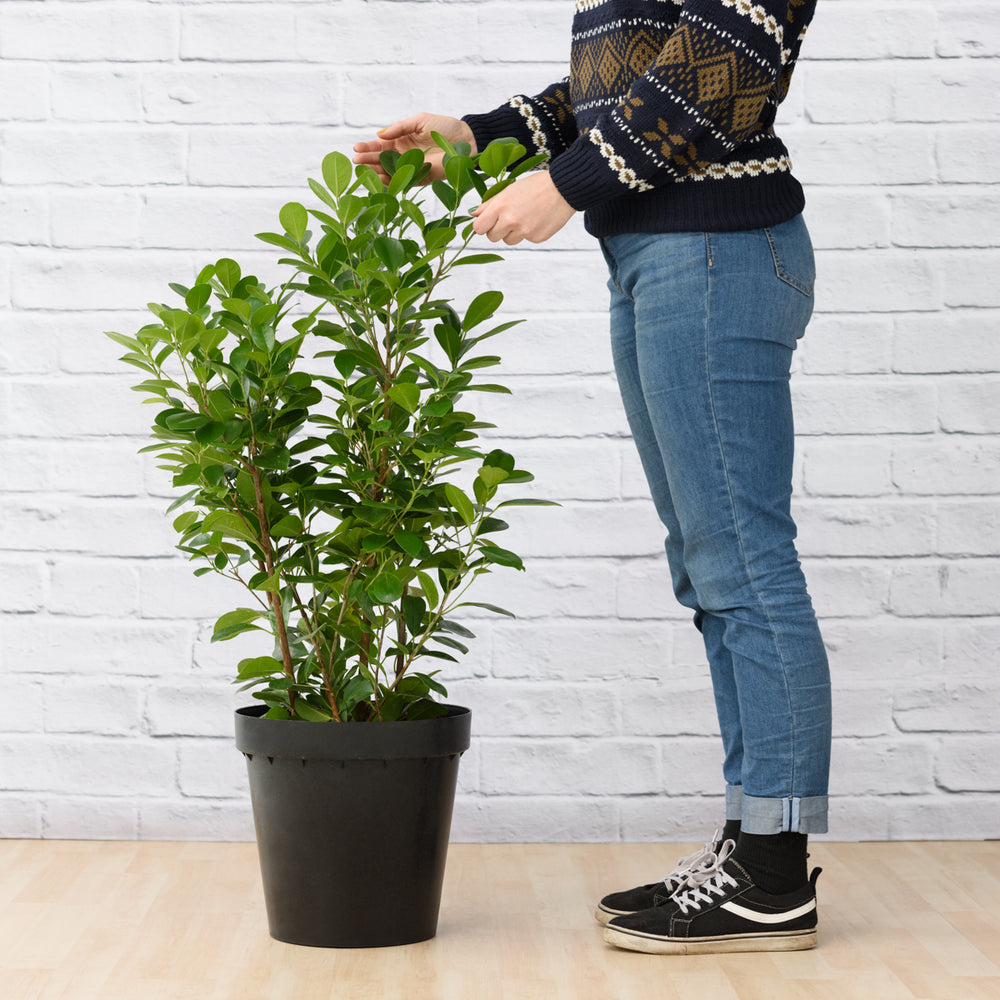
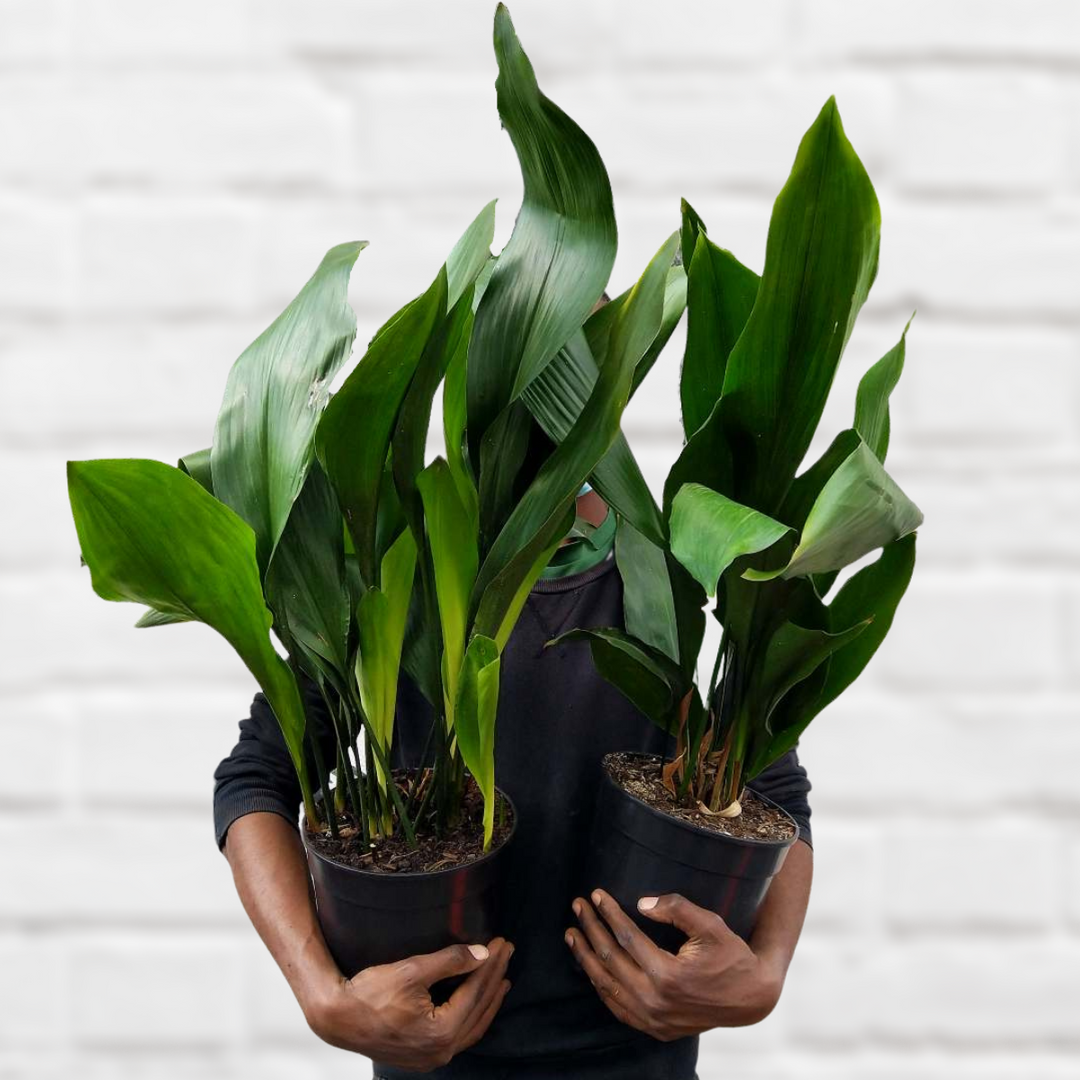
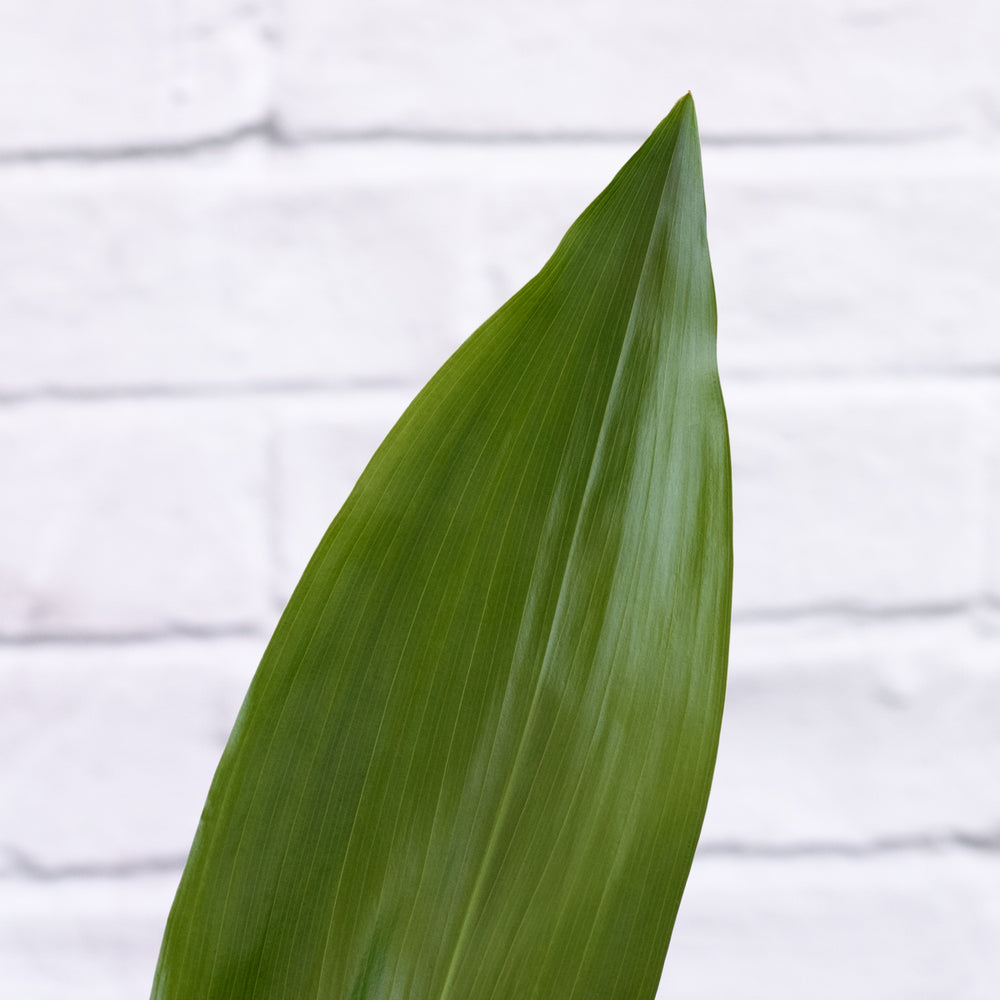
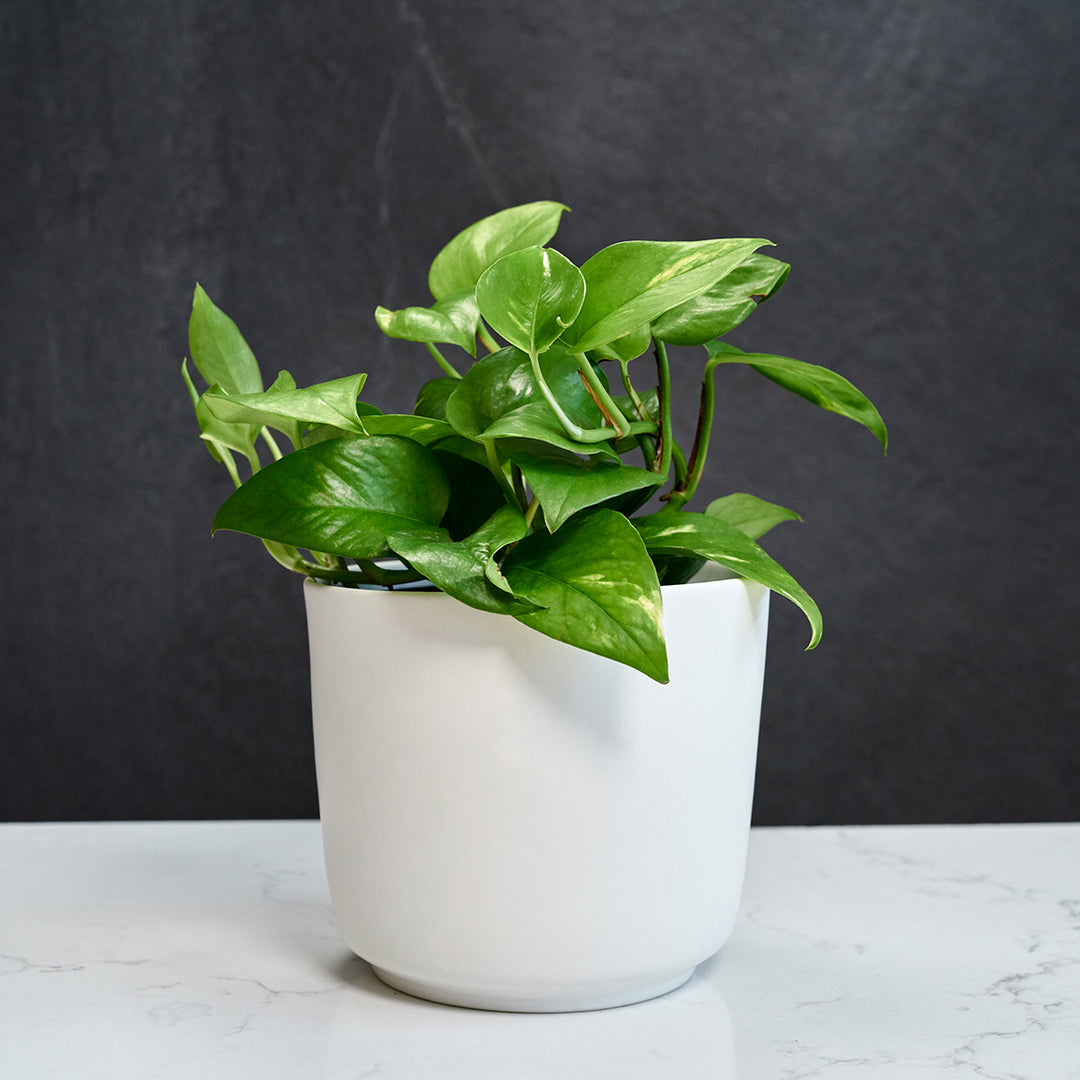

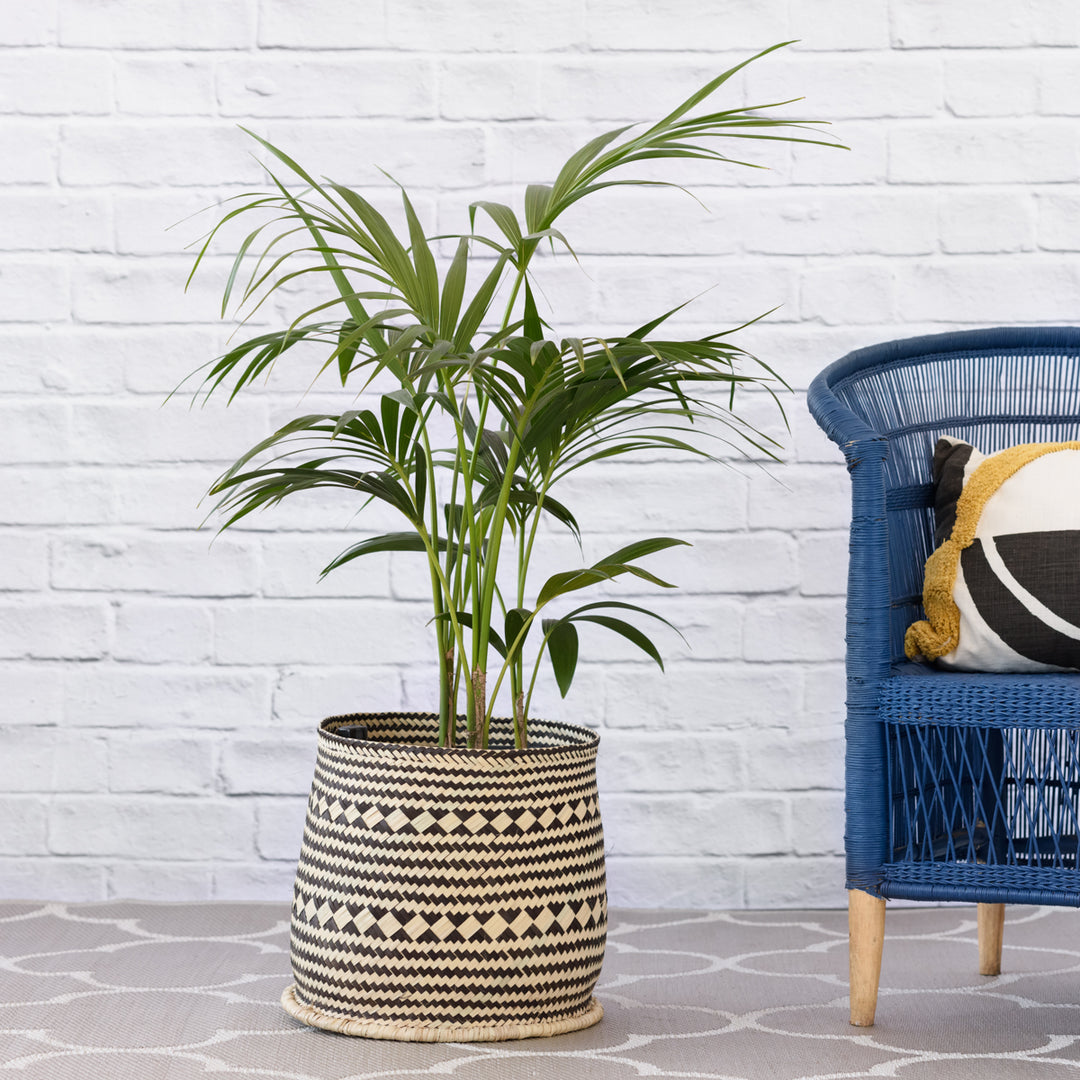
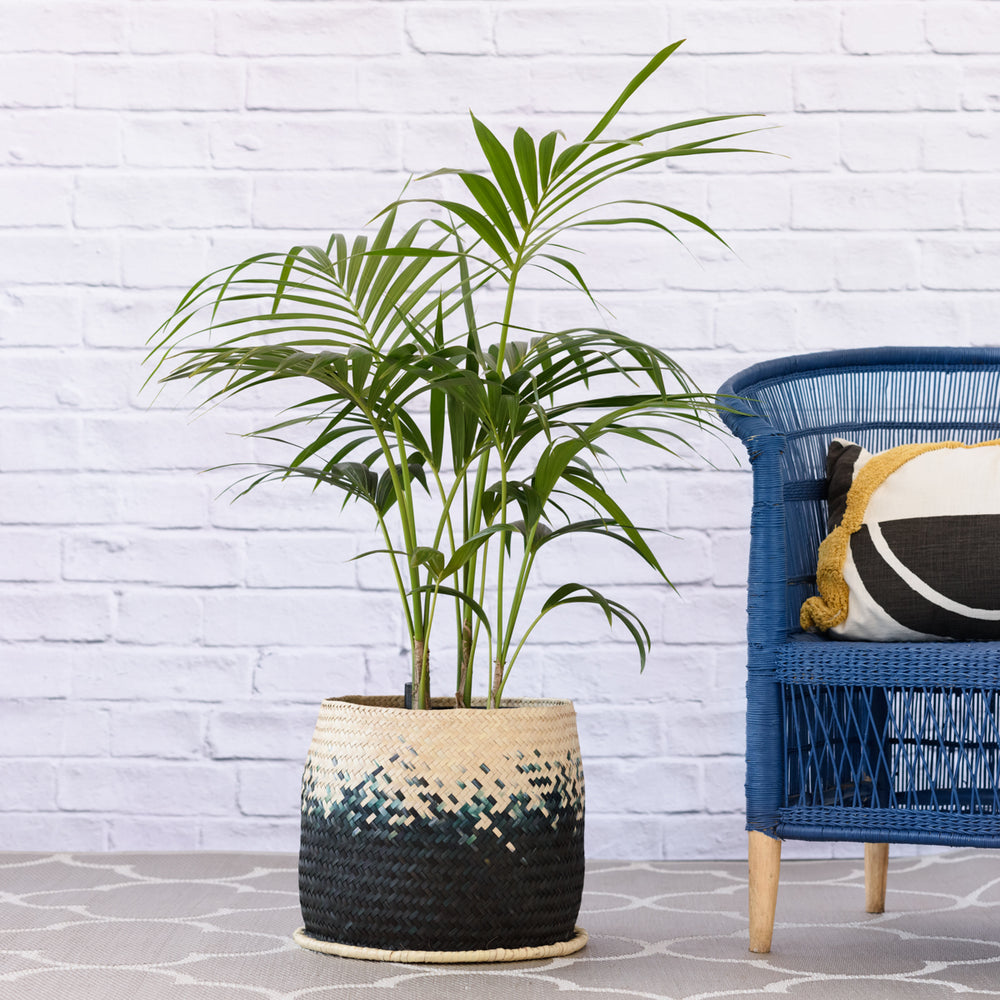

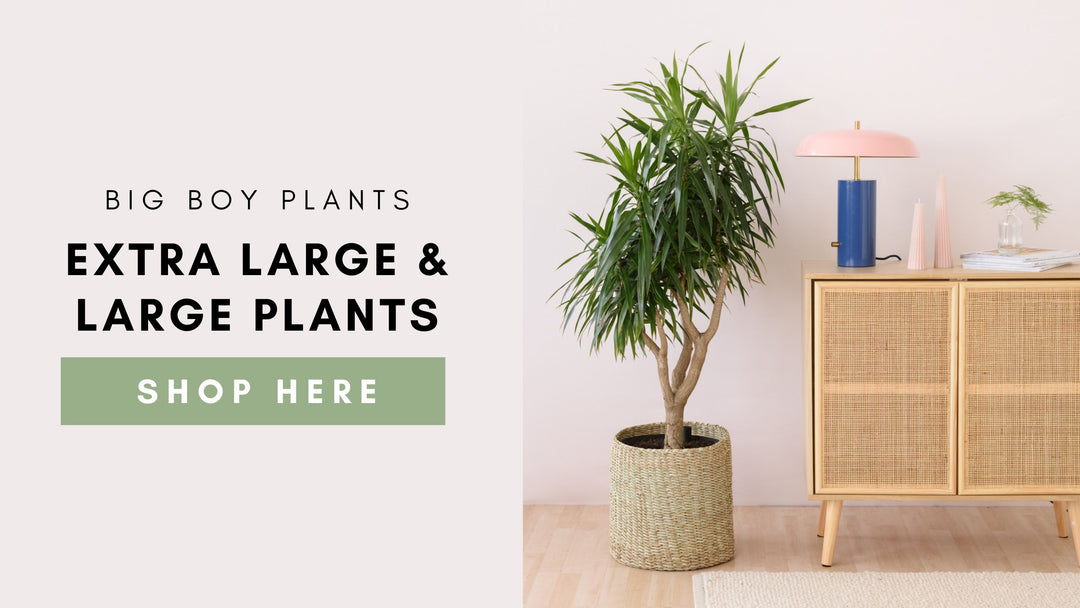
Leave a comment